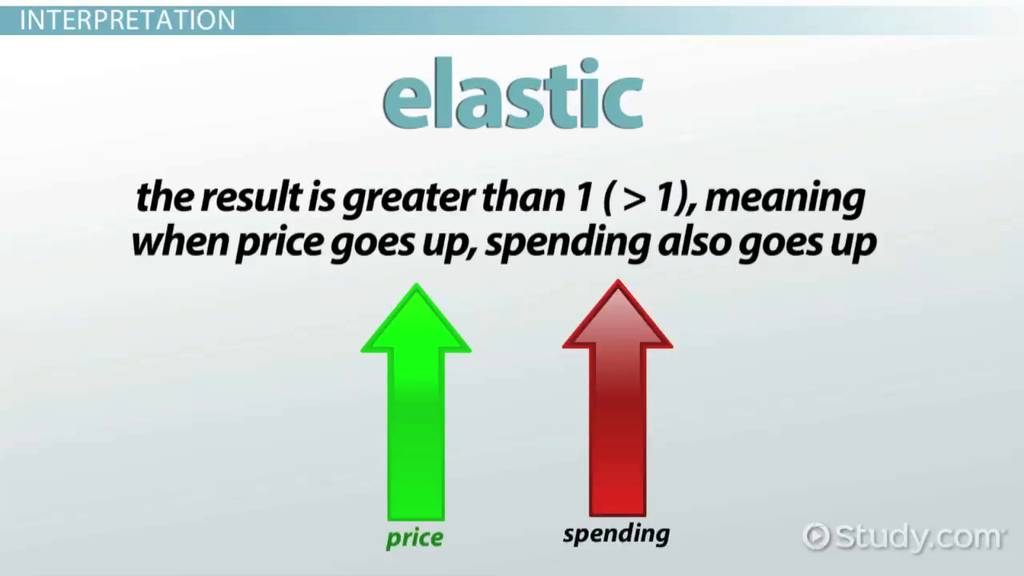
Understanding Elasticity: A Key Concept in Economics
Elasticity is a crucial concept in economics that measures the responsiveness of the quantity demanded or supplied in relation to changes in price or other determinants. This article dives into the different types of elasticity and factors that influence demand elasticity. Additionally, we explore the significance of price elasticity for businesses and provide real-world examples to illustrate its practical applications.
Elasticity and its Effects on Demand
Price Elasticity of Demand
Price elasticity of demand analyzes how demand reacts to changes in price. A value above 1.0 indicates that the demand is highly responsive to price changes, making it elastic. Conversely, a value below 1.0 suggests inelastic demand, where consumers are less sensitive to price fluctuations.
Income Elasticity of Demand
Income elasticity of demand examines how the quantity demanded for a good or service responds to changes in consumers’ real income. By calculating the percentage change in quantity demanded and income, economists determine if a good is a necessity or luxury.
Cross Elasticity of Demand
Cross elasticity of demand measures the responsiveness of the quantity demanded for one good to changes in the price of another good. This measurement helps understand the relationship between two products and how they impact each other.
Price Elasticity of Supply
Price elasticity of supply assesses the responsiveness of supply to changes in market price. In theory, an increase in price leads to an increase in supply, while a decrease in price leads to a decrease in supply.
Factors Affecting Demand Elasticity
Availability of Substitutes
The presence of substitute goods influences demand elasticity. If consumers have numerous substitutes, a small price increase can result in a significant decrease in demand. Conversely, for goods with few substitutes, such as necessities like gasoline, demand remains relatively inelastic.
Necessity
Goods considered essential for survival or comfort often exhibit inelastic demand. Even if their prices rise, consumers are willing to pay more to acquire them.
Time
Time plays a role in demand elasticity. Initially, a consumer addicted to cigarettes may continue purchasing them despite price increases. However, over time, the consumer may choose to quit due to affordability concerns, making cigarettes price elastic in the long run.
Importance of Price Elasticity in Business
Understanding the elasticity of goods or services is crucial for business success. Companies with elastic goods compete on price, relying on high sales volume to remain viable. In contrast, firms with inelastic goods can set higher prices without significant loss of demand. Moreover, demand elasticity directly affects customer retention rates, as inelastic goods enjoy continued demand even with price increases.
Examples of Elasticity
Uber’s Surge Pricing
Uber’s dynamic surge pricing algorithm helps manage supply and demand by increasing prices during peak times. This showcases how price elasticity of demand influences pricing strategies.
COVID-19 Impacts
The pandemic highlighted elasticity in various industries. For instance, meat shortages caused the price of imports to rise significantly. Additionally, historically low global oil demand led to negative oil prices temporarily, illustrating the impact of an elastic market.
Conclusion
Understanding elasticity is fundamental in economics, helping gauge the responsiveness of the quantity demanded or supplied to various factors. By considering the types of elasticity, factors influencing demand elasticity, and the importance for businesses, individuals can make informed decisions. Real-world examples further emphasize the practical applications of elasticity in different contexts.
Other references:
- Investopedia – Elasticity
- ThoughtCo – Economics for Beginners
- Investopedia – Elastic
- Wikipedia – Elasticity (economics)
- Harvard Business Review – A Refresher on Price Elasticity
- National Center for Biotechnology Information – Determinants of Price Elasticity of Demand
- Economics Help – Understanding Elasticity
- OpenStax – Principles of Economics: Key Concepts and Summary
- Analytics Steps – 4 Types of Elasticity in Economics
- OpenStax – Principles of Economics: Introduction
Leave a Reply